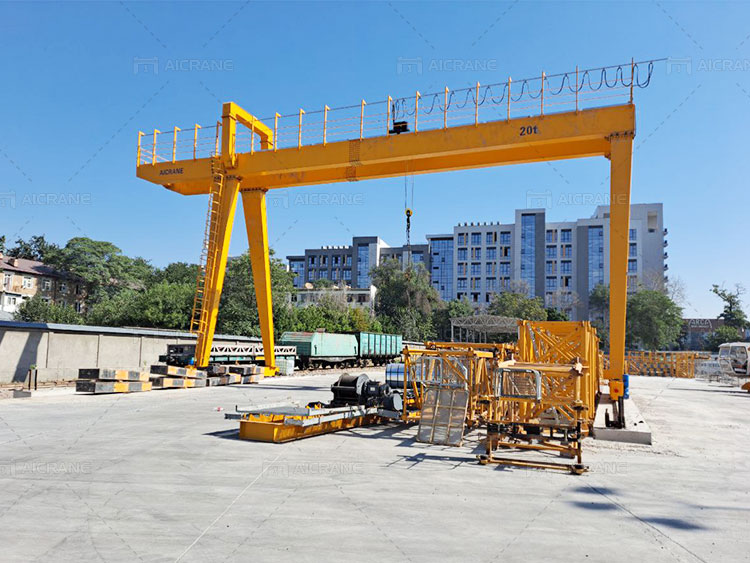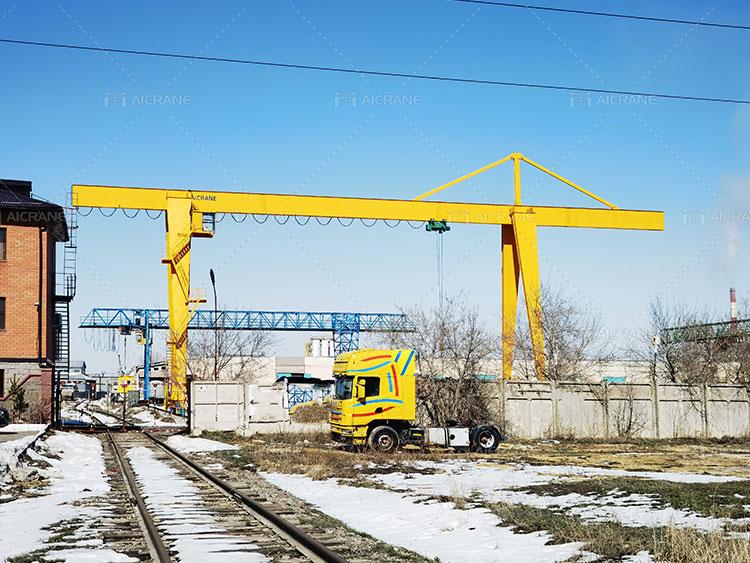Purchasing a 20-ton gantry crane is a significant investment for any business, whether for industrial, construction, or logistics applications. A gantry crane of this capacity offers versatility, efficiency, and the ability to handle heavy loads, making it an essential tool for operations involving material handling. However, cost considerations play a critical role in ensuring you get the best value for your investment without compromising on quality or functionality. This article outlines the key factors influencing the cost of a 20-ton gantry crane and how to navigate these considerations effectively.

1. Initial Purchase Price
The upfront cost of a gantry crane 20 ton depends on factors such as the type, design, and brand. Gantry cranes are available in various configurations, including single-girder, double-girder, and portable models. Double-girder designs generally cost more due to their enhanced lifting capacity and suitability for heavy-duty applications. Additionally, opting for a European-standard crane with advanced features and superior build quality may result in a higher price.
While it is tempting to choose the lowest-priced option, it is crucial to evaluate the crane’s specifications and quality. Investing in a robust and reliable crane can reduce long-term operational and maintenance costs, making it more cost-effective over time.
2. Customization Requirements
Many 20-ton gantry cranes are customizable to meet specific operational needs. Factors such as span, lifting height, cantilever length, and work duty class can be tailored to your project requirements. Customizations like specialized lifting mechanisms, additional safety features, or integration with automated systems can significantly influence the gantry crane cost.
For instance, a standard gantry crane with a fixed span and lifting height may be more affordable than one with an extended cantilever or additional height clearance. It’s essential to carefully evaluate your operational needs and balance customization with budget constraints.
3. Material and Build Quality
The materials used in the construction of the crane significantly impact its cost. High-quality steel and components designed for durability and heavy-duty applications generally come at a premium. However, these materials ensure the crane’s longevity, safety, and reliability, reducing the likelihood of costly repairs or replacements in the future.
When assessing material quality, consider the crane’s operating environment. For example, if the crane will be used in a corrosive or high-moisture environment, opting for corrosion-resistant materials or protective coatings might increase the initial cost but extend the crane’s lifespan.

4. Installation and Assembly Costs
Installation is another critical cost consideration when purchasing a 20-ton gantry crane. The complexity of the installation process depends on the crane’s size, design, and site conditions. Larger double girder gantry cranes typically require professional installation teams and specialized equipment, which can increase costs.
It’s advisable to work with manufacturers or suppliers who offer comprehensive installation services, including online or on-site guidance. Clear installation instructions or support can prevent delays and ensure the crane is set up safely and efficiently.
5. Power Supply and Control Systems
The type of power supply and control system also influences the crane’s cost. Gantry cranes can be equipped with electric, hydraulic, or manual systems. Electric systems with advanced features, such as remote control or variable frequency drives, tend to be more expensive but offer superior control and efficiency.
When evaluating power options, consider the long-term operational costs, such as energy consumption and maintenance. Choosing an energy-efficient system may involve a higher initial investment but can result in significant savings over time.
6. Shipping and Delivery Costs
Transportation costs can vary widely depending on the crane’s size, weight, and destination. International shipping often involves additional expenses, such as customs duties, taxes, and freight charges. Some manufacturers include shipping costs in their quotes, while others require separate arrangements.
To minimize shipping expenses, consider sourcing the crane from a supplier with a regional presence or partnerships with local distributors. Additionally, ensure the packaging and transportation method protects the crane from damage during transit.
7. Maintenance and Lifecycle Costs
The total cost of owning a 20-ton gantry crane extends beyond the purchase price. Maintenance, repairs, and eventual replacement parts contribute to the crane’s lifecycle costs. Choosing a crane with readily available spare parts and accessible service support can significantly reduce downtime and maintenance expenses.
Additionally, opting for a high-quality crane with a reliable warranty and after-sales service can provide peace of mind and protect your investment. Some manufacturers also offer maintenance packages, which can help you budget for ongoing expenses.
8. Regulatory Compliance and Safety Standards
Ensuring the crane meets local safety regulations and standards may involve additional costs. Compliance might require specific certifications, such as CE marking in Europe or ANSI standards in the United States. These certifications guarantee that the crane adheres to stringent safety and quality criteria.
While compliance may increase the initial cost, it minimizes the risk of accidents, liability issues, and operational disruptions, making it a worthwhile investment.
9. Supplier Reputation and Support
Working with a reputable gantry crane supplier can make a significant difference in your purchasing experience. Established manufacturers often provide better quality assurance, professional installation services, and comprehensive after-sales support. While such suppliers may charge a premium, the added value and reliability often justify the higher price.
Before finalizing a purchase, research the supplier’s track record, customer reviews, and service offerings. Request detailed quotes and compare them to ensure transparency and value for money.
10. Financing Options
For businesses concerned about upfront costs, many suppliers offer financing options, such as leasing or installment payment plans. These arrangements can make purchasing a 20-ton gantry crane more accessible, especially for small or medium-sized enterprises.
When exploring financing options, carefully review the terms and conditions, including interest rates and repayment schedules, to ensure they align with your financial capacity.
Conclusion
Purchasing a 20-ton gantry crane is a complex process that requires careful consideration of various cost factors. From the initial purchase price to customization, installation, and maintenance, every element contributes to the overall investment. By evaluating these aspects and prioritizing quality, safety, and supplier reliability, you can make an informed decision that ensures the crane meets your operational needs and provides long-term value.
Investing time in research, supplier comparisons, and understanding your specific requirements can help you balance cost considerations with functionality and efficiency. Ultimately, a well-chosen 20-ton gantry crane is not just a purchase but a strategic asset that drives productivity and growth for your business.
